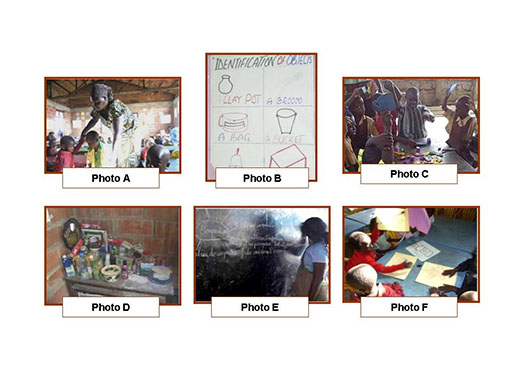3.2 Active teaching and learning methods
Table 3 shows some important active teaching and learning methods and some of the skills that teachers, student teachers and teacher educators need to develop – these are all covered in the TESSA materials.
| Active teaching strategy | Skills the teacher needs |
|---|---|
| Whole class interactive teaching |
|
| Group work and pair work |
|
| Demonstration |
|
| Building models |
|
| Problem solving |
|
| Project work |
|
| Storytelling, songs, role play and drama |
|
| Using local resources |
|
| Practical work |
|
| Assessment for learning |
|
| Giving feedback |
|

Activity 3.2: Identifying active teaching methods
This activity shows how the link between the description of active teaching methods and actual examples.
You could use this activity with student teachers in a seminar on active learning and teaching. You will need a copy of the TESSA section you downloaded for Activity 2.1 in Tool 2, or another TESSA section of your choice.
Part 1
Read the case studies and use to Table 3 to identify which active teaching and learning method(s) each one illustrates.
For example, Case study 1 illustrates method 3 (collaborative activities) and method 10 (group work)
Part 2
Look at the photos below. For each one, identify the active teaching and learning method(s) illustrated.

Tool 12 provides an audit that you can use to evaluate your own practice and that of your students and plan for including more active learning methods in teaching.
3.1 What is active learning?



